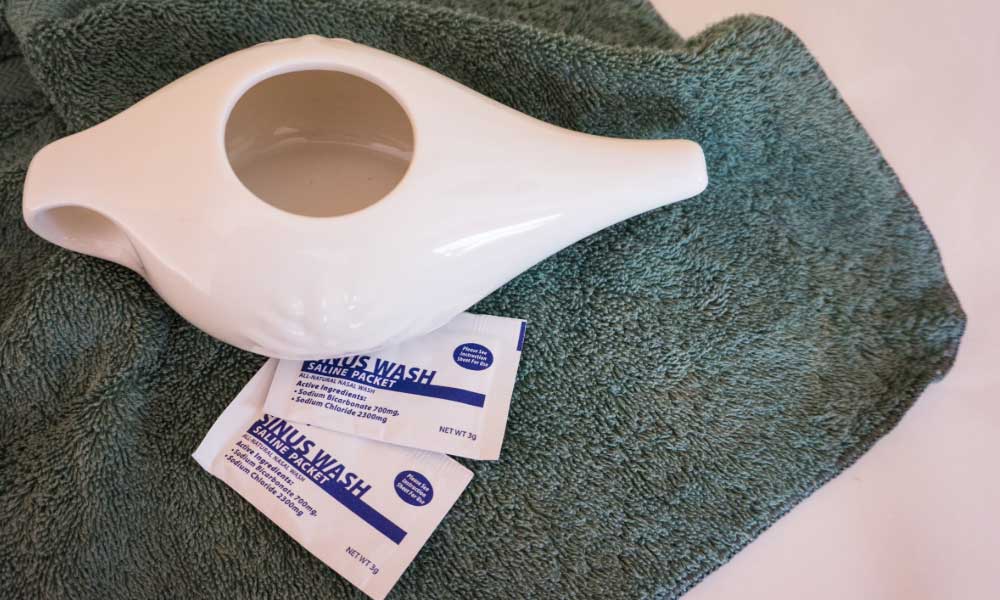January 11, 2013
Treatment Approach Has Roots with Local Allergy Clinic
Eight types of food account for over 90 percent of allergic reactions: milk, eggs, peanuts, tree nuts, fish, shellfish, soy and wheat. Among those, peanut allergy is known to cause more severe reactions and anaphylaxis episodes compared to other foods. Despite allergy sufferers’ efforts of avoiding food allergens and carrying an epi-pen, accidental exposures to food allergies account for 30,000 episodes of anaphylaxis and 100-200 deaths per year in the United States. Even with avoidance measures, approximately one of every four food allergic individuals will have an accidental exposure leading to a reaction.
For most patients, the standard of care has been strict dietary elimination and in cases of accidental ingestion, administration of epinephrine. However, the tri-state region’s allergy patients have had access to a novel therapy for the past four decades at Allergy Associates of La Crosse. Clinic founder, Dr. David Morris was the first U.S. physician to publish an article in the Annals of Allergy, Asthma and Immunology in 1969 about using allergy antigens under the tongue for the treatment of food allergies. Every year, thousands of patients travel to the clinic in hopes of building their tolerance to environmental and food allergies through sublingual immunotherapy, or commonly referred to as allergy drops taken under the tongue.
In 2003, Allergy Associates of La Crosse President, Dr. Mary Morris began contacting medical research institutions around the United States to further research sublingual immunotherapy food allergy treatment. It was then that Dr. Mary Morris connected with Dr. Wesley Burks, formerly with Duke University, to investigate the first sublingual immunotherapy study for peanut allergy (National Institutes of Health Grant Number 1R21AT002557-01A1). The collaboration between Allergy Associates of La Crosse and Duke University brought together extensive clinical and research experience to conduct the trial.
Dr. Burks, now on staff with the University of North Carolina School of Medicine, has been a key driver for continuing and expanding both oral and sublingual immunotherapy research in the United States. Peanut sublingual immunotherapy research was expanded to include a multi-center clinical trial including researchers from National Jewish Health, the University of North Carolina, the University of Arkansas for Medical Sciences and Arkansas Children’s Hospital, Johns Hopkins University School of Medicine, Mount Sinai School of Medicine, the National Institutes of Health and the Consortium of Food Allergy Research. The results of the study are published in the January 2013 issue of the Journal of Allergy and Clinical Immunology. Study findings concluded that peanut sublingual immunotherapy (allergy drops) safely induced desensitization in a majority of study participants compared to placebo. The longer the duration of therapy, the greater the amount of peanut antigen patients could safely consume.
What does this study mean for the food allergic patient? “By starting the research with the most challenging food allergy, peanut, we can gather that similar results would be found with other top food allergens, and thus enable physicians to treat a wider variety of food allergies,” says Dr. Mary Morris of Allergy Associates of La Crosse.
What does this mean for Allergy Associates of La Crosse and local food allergy sufferers? “Clinical trials are important to advance the practice of medicine. The peanut sublingual immunotherapy trials are intended to test the scope of dosing levels while balancing what is still safe for patients. For our clinic and my colleagues, we are seeing research validate what our patient’s test results have shown us for the past 20 years as well as learning more about advancing our food treatment levels safely while still maintaining symptom improvement for our patients. It also further validates that medical innovation can and does occur at the clinical level. Our physicians are excited to see sublingual immunotherapy treatment for food allergy progress so that more patients, especially those that are unable to travel to La Crosse for care can be helped in the future,” concluded Dr. Morris.
How does Sublingual Immunotherapy Treatment for Food Allergies Work?
Everyday foods can cause symptoms including mouth itching, headache, runny nose, hives, eczema, skin itching, upset stomach, fatigue, and loose stools. Unfortunately, food allergies are becoming more prevalent in the U.S. with six to eight percent of children under age four and 3.7 percent of adults affected. Food allergies are most often seen in people with other underlying allergies and with a family history of allergy. While most allergies present themselves in childhood, they can occur at any age.
With peanut allergy for example, the amount of peanut that can trigger an allergic reaction may be a few grams (several peanuts) or a few milligrams (hidden or trace amounts in a food). Treatment for each particular food allergy with sublingual immunotherapy begins at a much lower level than the amount that triggers reactions. Each patient’s starting dose is precisely determined from allergy test results. This small amount placed under the tongue daily is enough for the immune system to learn to tolerate the food allergy, yet is below the level that triggers a reaction.
The goal of sublingual immunotherapy treatment for food allergy will vary from patient to patient. For those with mild to moderate allergies, it is possible to reintroduce allergic foods into one’s diet, while with those whose allergies are severe and life-threatening, the goal is to reduce the likelihood of an allergic reaction to an accidental exposure. For a child with peanut allergy, treatment may allow a parent peace-of-mind when their child is in the school lunch room or at a friend’s birthday party. The end result is improved quality of life for the family and safety for the child.
Request an Appointment
